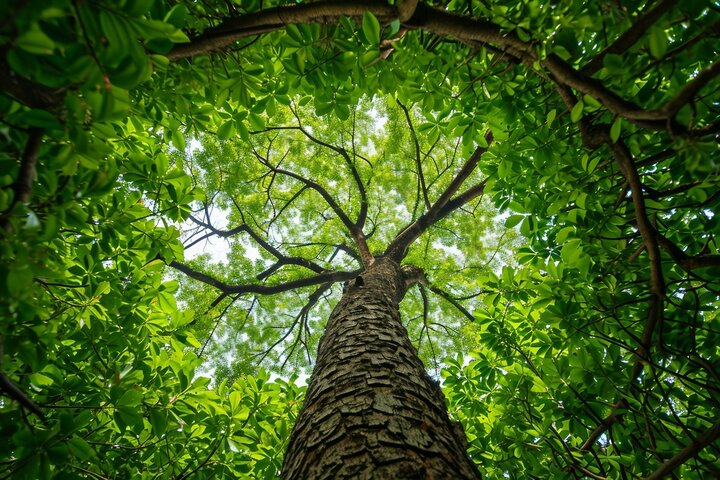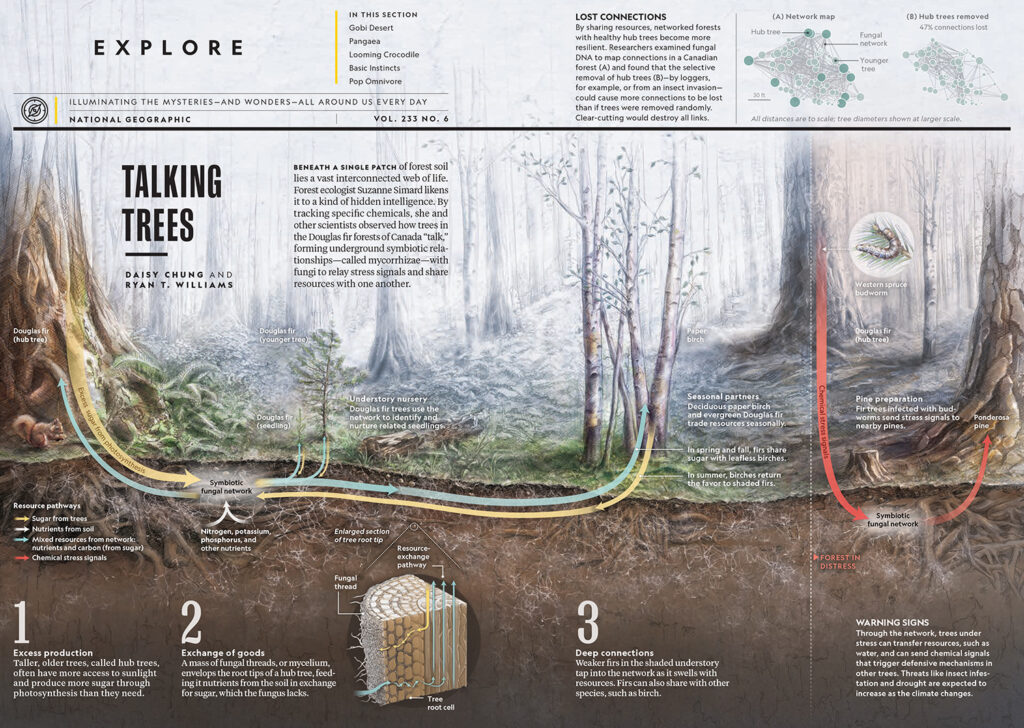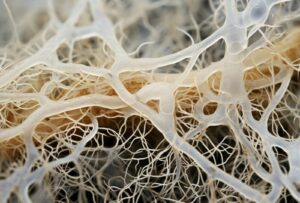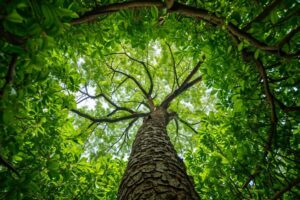“Mother trees are the biggest, oldest trees in the forest.
Dr. Suzanne Simard (Finding the Mother Tree)
They are the glue that holds the forest together. ”
Over the last decade, research has shed light on the ability of trees in a forest to communicate and share resources. The notion of “intelligence” amongst the stoic, towering beasts of the plant world has ignited like wildfire within popular culture. Central to the buzz are two New York Times best selling books, Finding the Mother Tree by Suzanne Simard and The Hidden Life of Trees by Peter Wohlleben.
Hub trees, also known as Mother Trees, are said to connect hundreds of younger trees in a forest via underground fungal networks, sharing nutrients, carbon, nitrogen, and aiding in the survival of saplings and seedlings. This network of connections is believed to create community resilience and is often referred to as the “wood wide web.”
Author and forest ecologist Dr. Suzanne Simard began her fieldwork in the 1980s after witnessing the effects of clear-cut logging in British Columbia. Her research aims to understand these connections to strengthen forest renewal practices as the climate changes. Simard argues that Mother Trees recognize their kin and support ‘communication and nutrient exchange amongst trees.’ Spanning three decades, her work has landed her as one of TIME’s 100 Most Influential People of 2024. You can learn more by picking up her book, watching her Ted Talk and visiting The Mother Tree Project.
Are Trees Conscious or Intelligent?
Lately, the notion that trees possess social lives or even ‘consciousness’ has sparked considerable controversy. With childhood favorites like Shel Silverstein’s ‘The Giving Tree‘ and box office hits like ‘AVATAR,’ the romantic idealization of nurturing trees has gained immense popularity.
While some research provides support for these claims, a recent article in The Guardian explores how ‘the cultural fixation on sentient trees’ has outpaced scientific evidence. This trend risks overshadowing and delegitimizing important research in the field. (We HIGHLY recommend you reading it, it is an amazing piece of journalism.)
Mycorrhizal Networks
What scientists across the board do agree on is the existence of Mycorrhizal Networks, a complex web of fungal networks that colonize a tree’s roots, connecting them to nutrients and other roots beneath the forest floor. Studies argue that“increasing our understanding of the structure and function of MNs in ecosystems may lead to a deeper understanding of ecological stability and evolution, and thus provide new theoretical approaches to improve conservation practices for the management of the Earth’s ecosystems.”
As our readers know by now, we are a bit obsessive about the relationship between trees and fungus. We will talk more about these fascinating Mycorrhizal Networks in next months issue.
Cheers,
Viktoria
Thank you for reading! We appreciate your time and attention. Feel free to share the info and spread the love of tree science and education. If you have any comments or suggestions for future topics, we’d love to hear from you!








